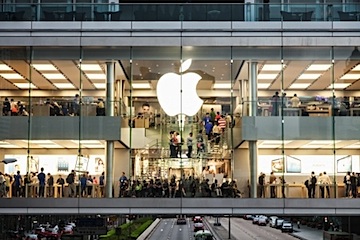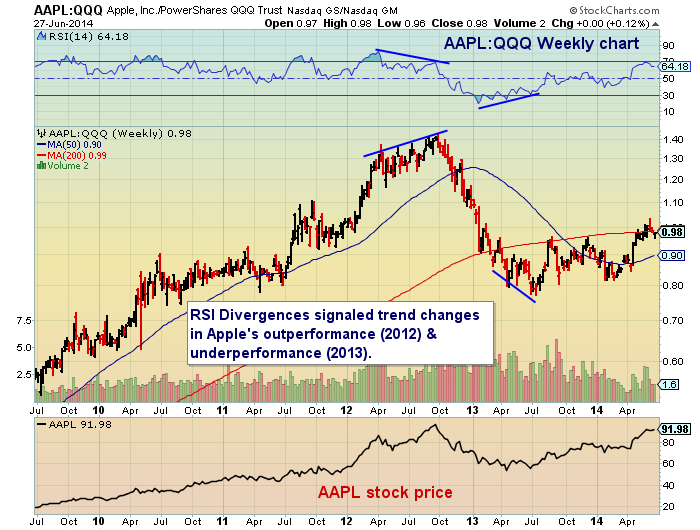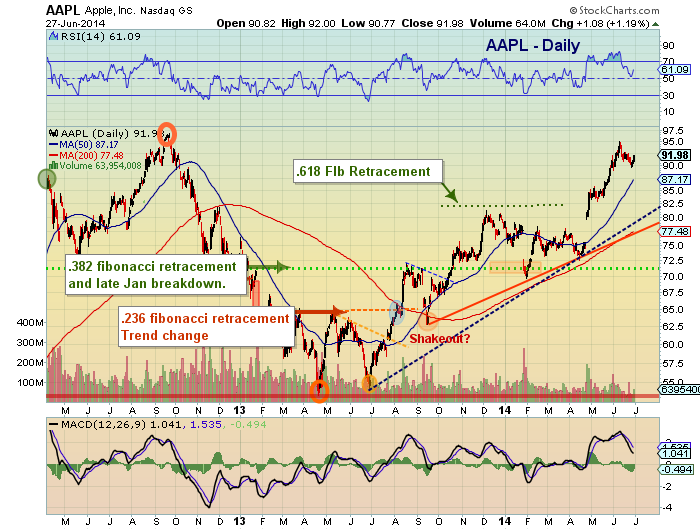 Buying an asset when everyone hates it has been a strong recipe for successful investing over the years. But, contrarian investing is much more than meets the eye; it requires extreme patience, strong discipline, and a plan. So what might a contrarian investor be interested in? Hint: Value (on long side) and over-value (on short side). Big-time investors like Warren Buffett or Carl Icahn fit this profile. And speaking of the latter, the best example of a recent contrarian play is Apple, Inc (AAPL).
Buying an asset when everyone hates it has been a strong recipe for successful investing over the years. But, contrarian investing is much more than meets the eye; it requires extreme patience, strong discipline, and a plan. So what might a contrarian investor be interested in? Hint: Value (on long side) and over-value (on short side). Big-time investors like Warren Buffett or Carl Icahn fit this profile. And speaking of the latter, the best example of a recent contrarian play is Apple, Inc (AAPL).
Over the course of a couple years, the stock pushed on both its bullish and bearish sentiment extremes: In 2012, AAPL was off to $1000 before it was derailed… and in 2013, it was on its way to $0 before reversing higher.
Other recent and similar examples include Natural Gas and Facebook (FB). Both were equally out of favor, and both produced great buying opportunities in 2012 (I covered the bottoms on each here and here, respectively). In both cases, extreme sentiment led to big contrarian moves. This sounds in line with Apple’s recent bottoming process and rally towards all-time highs.
But valuing Apple (or any stock for that matter) is a difficult proposition. And therefore a blend of technical and fundamental analysis must be considered. Understanding that there are several ways to analyze the current setup (and I am biased towards technical analysis), I am going to focus on 3 things that I think bear importance in gauging Apple’s current investment value and intermediate-term potential.
1. Apple’s performance relative to Nasdaq 100 ETF (QQQ)
For several years, this was Apple’s market. If Apple was up, the equity market was up. On a relative outperformance basis, the stock rocked. And this magnetized investors to the stock to the point that they became lemmings. Every other headline seemed to be about Apple. Then came the downturn. And as price continued to decline a ‘hope and fail’ pattern, everyone and their grandmother became angry. And this produced some serious relative underperformance that led to a bottom in prices. In fact, both major pricing turns were setup by RSI divergences.
My point in all this chatter is that relative performance is an important indicator. And Apple is once again starting to outperform the Nasdaq 100. This makes Apple an attractive “portfolio” stock. And one to eye for pullback trades… but that where technical analysis comes in…
AAPL:QQQ Performance Chart
2. The Current Technical Setup
Apple signified a trend change when it took out its .236 Fibonacci Retracement level, and signaled higher prices yet with each successful break above key Fibs and price resistance. That said, any time a stock is near all-time highs, it’s a good reason to expect a pause. Back on June 10th (with Apple near $94), I highlighted overhead resistance at $95-$97 and the expectation for a pause (RSI was over 80!).
For Apple longs or prospective longs, the first support resides at the recent lows ($89.65), followed by the 50 day moving average around $87. A deeper correction would likely find support at the old 61.8 Fib (around $82) and 200 day moving average around $77 and rising.
Either way, Apple’s next big challenge will be to break out to all-time highs. A break out to new highs would confirm that Apple is back in the saddle.
AAPL Technical Chart (2012-2014)
3. The Fundamental Back-Drop.
A big part of what makes Apple who they are is their brand recognition. And much of their brand recognition comes from their consumer products empire. Although they are much deeper than the traditional consumer products company, they do rely heavily on new products and product line (segment) innovation. And staying on top of consumer’s next moves can be complex and difficult. In short, there’s not a lot of room for mistakes. So it will be interesting to see if Apple makes a bigger splash later this year or early next year on the new products front (perhaps tied to iWatch or Apple TV).
But this leads to an even bigger fundamental reason to like Apple: Their cash. Sure, investors can argue over how they should use their cash. BUT, this is a good problem to have. Their growing cash pile provides seemingly endless funding for Research and Development, a quality dividend, as well as an ability to buy back shares like no other company. And, although Apple hasn’t unleashed their cash reserves on a mega merger/acquisition, they do have the luxury of being able to eye growing companies that fit into their footprint and plans (Beats?).
Yes, these are simply surface observations, but huge cash reserves push Apple into the thick of several portfolio conversations. And make it a stock for active investors to watch.
Conclusion
When taken together, it’s clear that Apple has regained some of its lost luster. BUT, in order to continue higher, it will need to efficiently consolidate recent short-term gains AND breakout to new all-time highs. Price will likely be the best indicator that the company is doing good things with its cash reserves.
No position in any of the mentioned securities at the time of publication. Any opinions expressed herein are solely those of the author, and do not in any way represent the views or opinions of any other person or entity.










